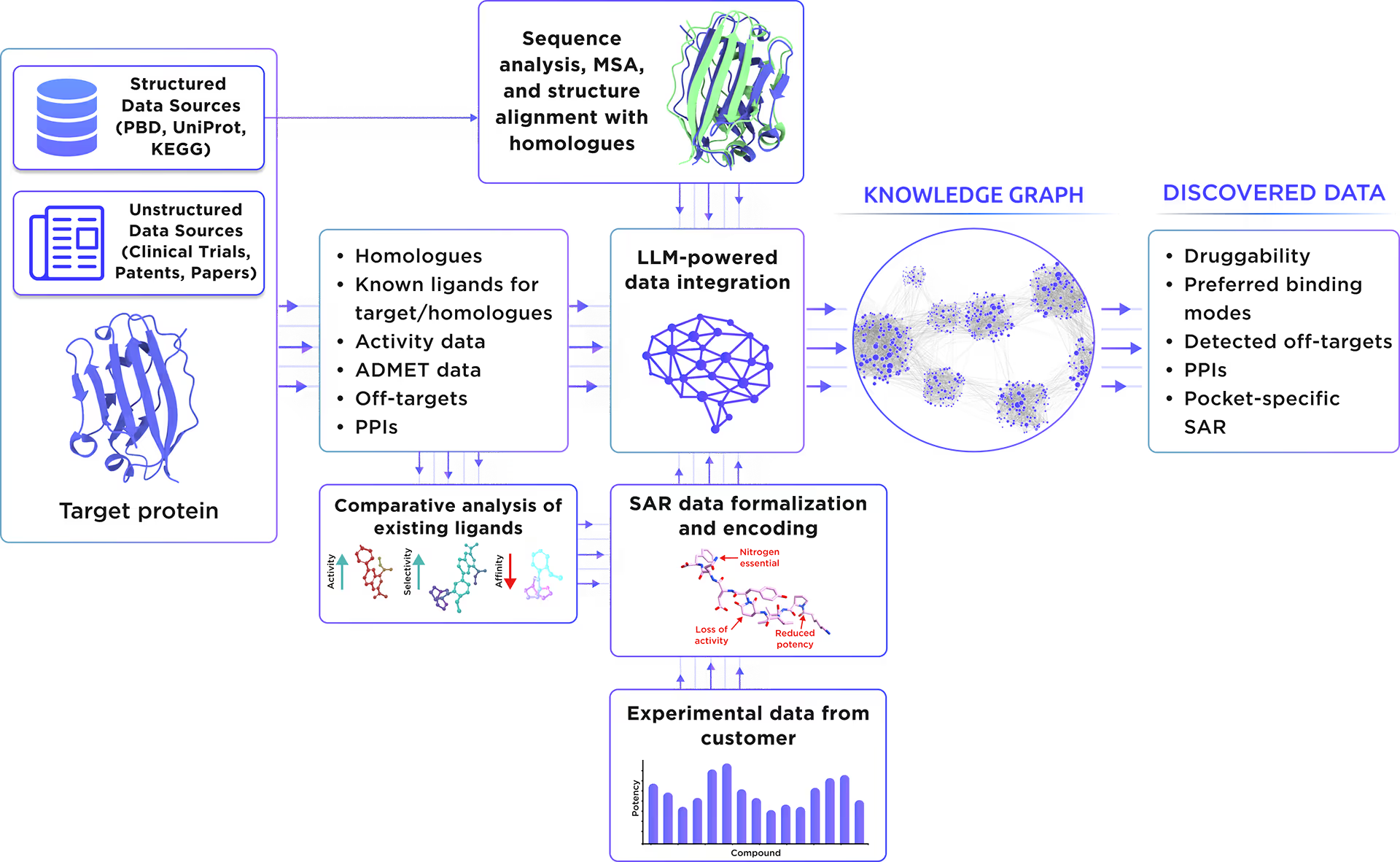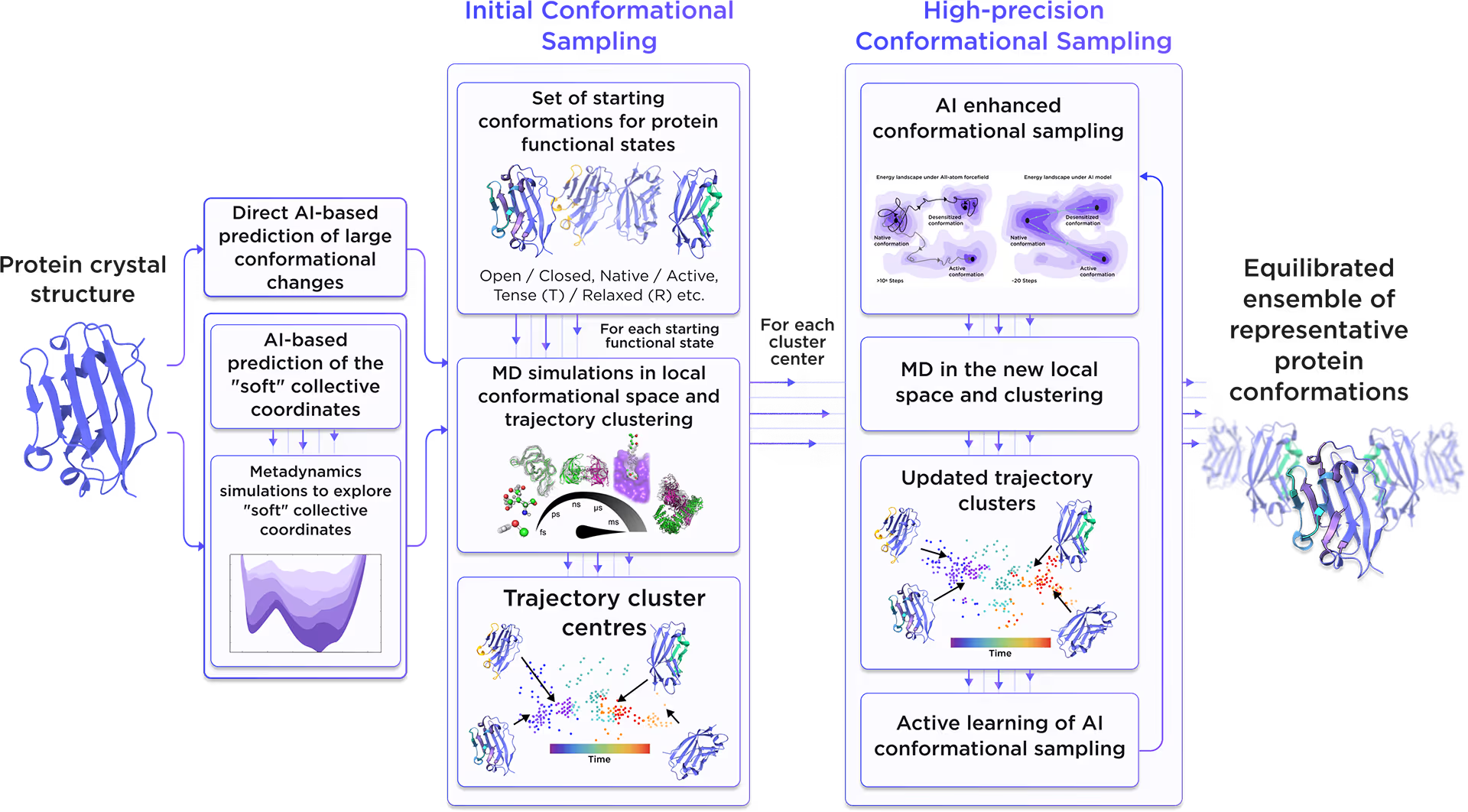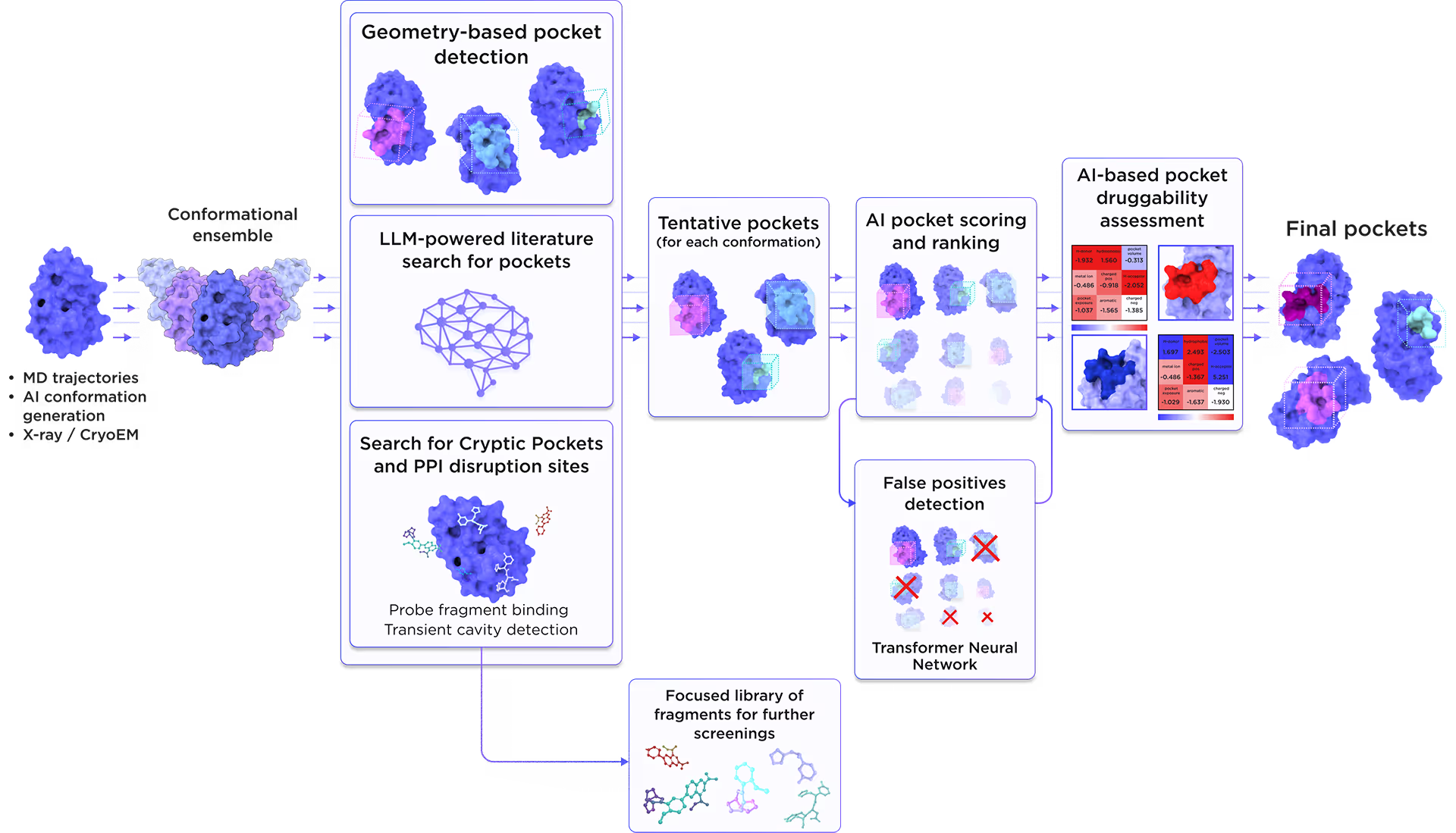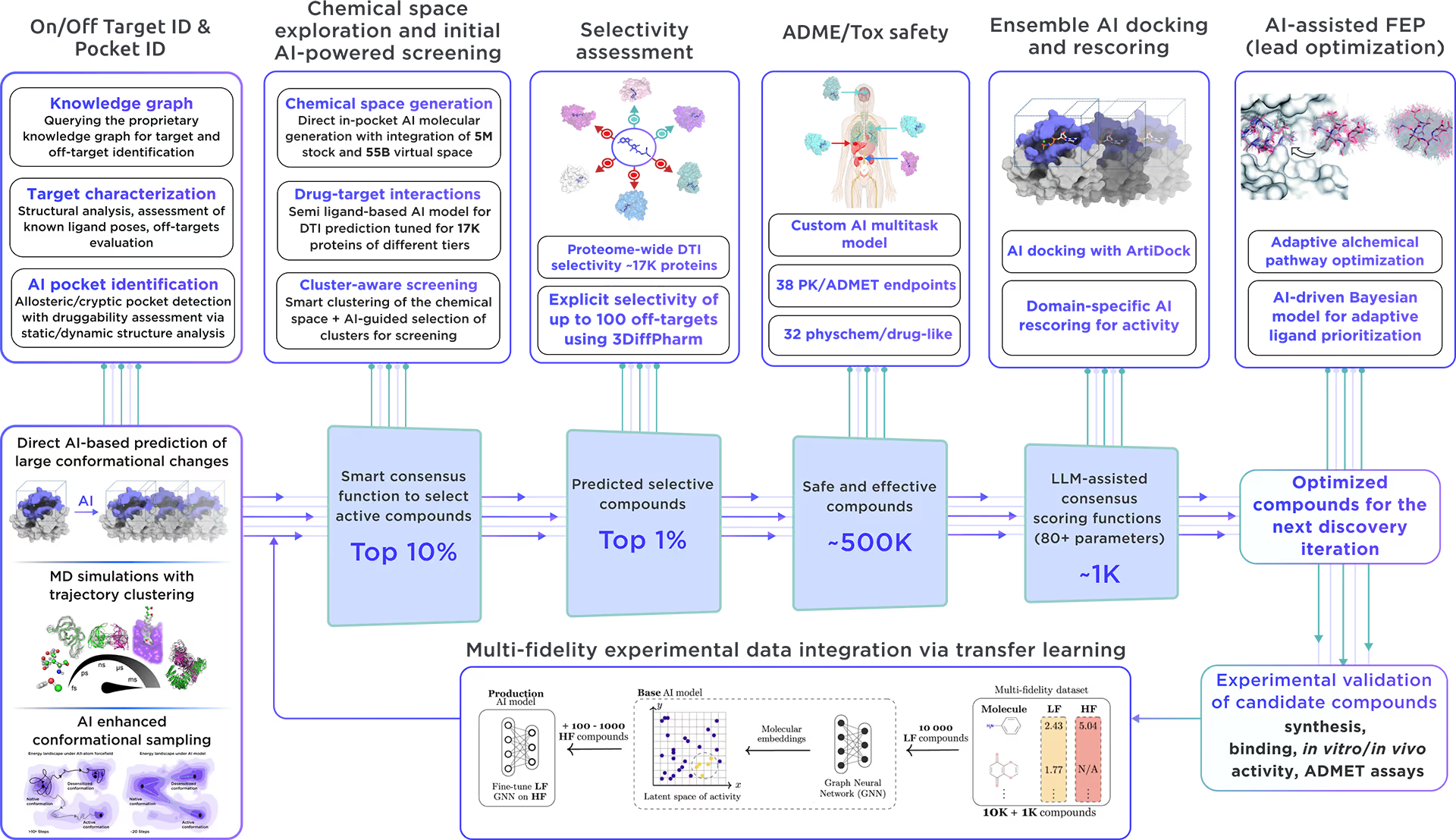

Available from Reaxense
This protein is integrated into the Receptor.AI ecosystem as a prospective target with high therapeutic potential. We performed a comprehensive characterization of Kinesin-like protein KIF3B including:
1. LLM-powered literature research
Our custom-tailored LLM extracted and formalized all relevant information about the protein from a large set of structured and unstructured data sources and stored it in the form of a Knowledge Graph. This comprehensive analysis allowed us to gain insight into Kinesin-like protein KIF3B therapeutic significance, existing small molecule ligands, relevant off-targets, and protein-protein interactions.

Fig. 1. Preliminary target research workflow
2. AI-Driven Conformational Ensemble Generation
Starting from the initial protein structure, we employed advanced AI algorithms to predict alternative functional states of Kinesin-like protein KIF3B, including large-scale conformational changes along "soft" collective coordinates. Through molecular simulations with AI-enhanced sampling and trajectory clustering, we explored the broad conformational space of the protein and identified its representative structures. Utilizing diffusion-based AI models and active learning AutoML, we generated a statistically robust ensemble of equilibrium protein conformations that capture the receptor's full dynamic behavior, providing a robust foundation for accurate structure-based drug design.

Fig. 2. AI-powered molecular dynamics simulations workflow
3. Binding pockets identification and characterization
We employed the AI-based pocket prediction module to discover orthosteric, allosteric, hidden, and cryptic binding pockets on the protein’s surface. Our technique integrates the LLM-driven literature search and structure-aware ensemble-based pocket detection algorithm that utilizes previously established protein dynamics. Tentative pockets are then subject to AI scoring and ranking with simultaneous detection of false positives. In the final step, the AI model assesses the druggability of each pocket enabling a comprehensive selection of the most promising pockets for further targeting.

Fig. 3. AI-based binding pocket detection workflow
4. AI-Powered Virtual Screening
Our ecosystem is equipped to perform AI-driven virtual screening on Kinesin-like protein KIF3B. With access to a vast chemical space and cutting-edge AI docking algorithms, we can rapidly and reliably predict the most promising, novel, diverse, potent, and safe small molecule ligands of Kinesin-like protein KIF3B. This approach allows us to achieve an excellent hit rate and to identify compounds ready for advanced lead discovery and optimization.

Fig. 4. The screening workflow of Receptor.AI
Receptor.AI, in partnership with Reaxense, developed a next-generation technology for on-demand focused library design to enable extensive target exploration.
The focused library for Kinesin-like protein KIF3B includes a list of the most effective modulators, each annotated with 38 ADME-Tox and 32 physicochemical and drug-likeness parameters. Furthermore, each compound is shown with its optimal docking poses, affinity scores, and activity scores, offering a detailed summary.
Kinesin-like protein KIF3B
partner:
Reaxense
upacc:
O15066
UPID:
KIF3B_HUMAN
Alternative names:
HH0048; Microtubule plus end-directed kinesin motor 3B
Alternative UPACC:
O15066; B2RMP4; B4DSR5; E1P5M5
Background:
Kinesin-like protein KIF3B, also known as HH0048 and Microtubule plus end-directed kinesin motor 3B, is a microtubule-based molecular motor. It plays a crucial role in transporting intracellular cargos, such as vesicles, organelles, and protein complexes, by utilizing ATP hydrolysis. KIF3B is instrumental in cilia formation and maintaining photoreceptor integrity, specifically in rod photoreceptors, and facilitates the trafficking of vesicles containing NMDA receptor subunit GRIN2A into neuronal dendrites.
Therapeutic significance:
Given its involvement in Retinitis pigmentosa 89, a retinal dystrophy characterized by night vision blindness and loss of midperipheral visual field, Kinesin-like protein KIF3B presents a promising target for therapeutic intervention. Understanding the role of Kinesin-like protein KIF3B could open doors to potential therapeutic strategies for treating not only retinal dystrophies but also related ciliopathies.